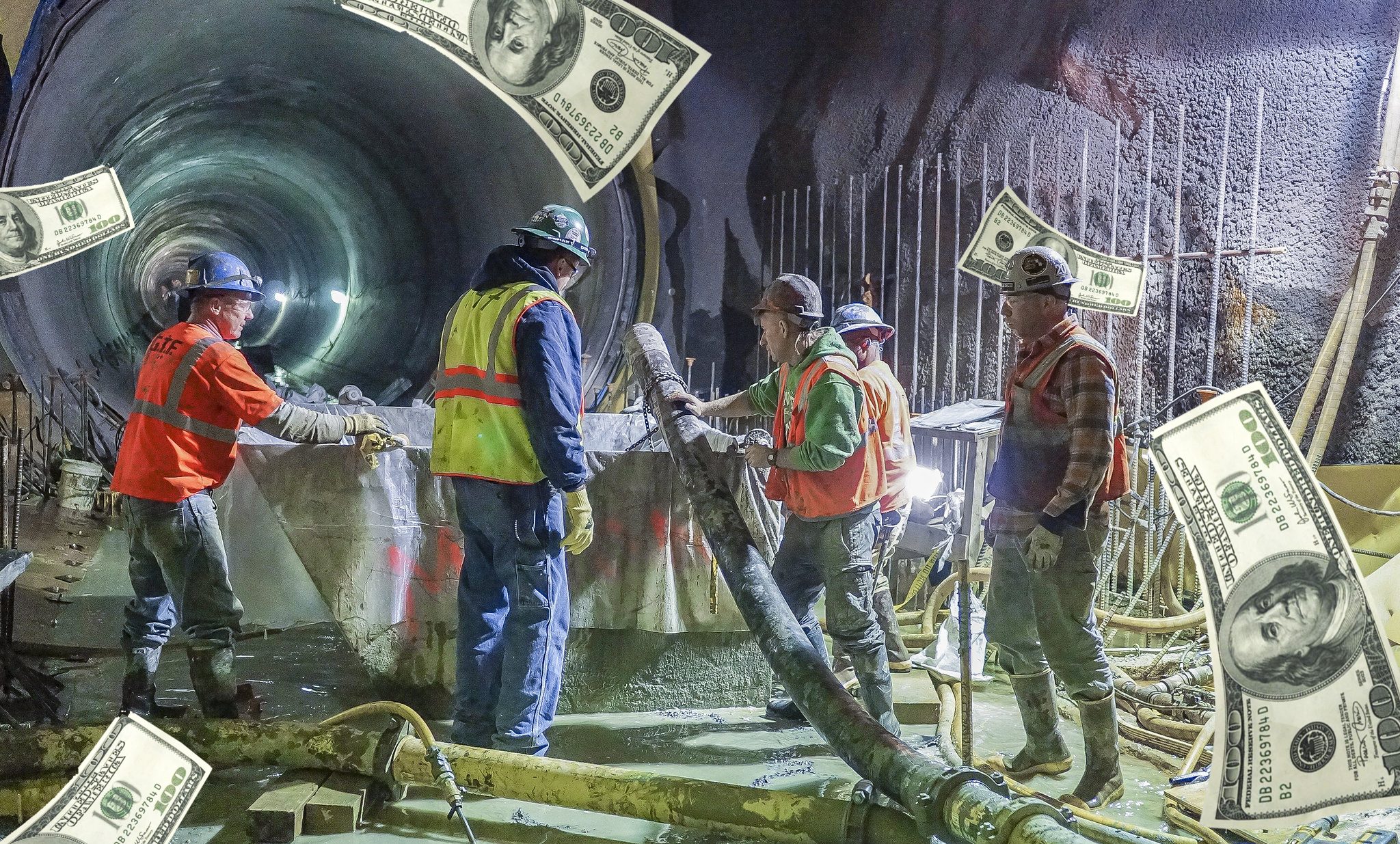If at first you don’t succeed, try, try again to cut transit funding.
Even though Congress passed a bipartisan infrastructure law three years ago, House Republicans are trying to gut — by billions — the amount of funding sent to transit agencies and Amtrak by the federal government in the next fiscal year.
The latest budget proposal from the House Transportation, Housing, and Urban Development subcommittee seeks to slash annual federal spending on public transit by $1.3 billion and cut spending on rail funding by $262 million from what Congress approved in the 2024 fiscal year.
The Democratic-controlled Senate will almost certainly nix these Draconian transit cuts once lawmakers return from their August recess. But just in case, advocacy groups, including the American Public Transportation Association, Transportation for America, and Just Strategy have already begun mobilizing constituents to make calls and sign petitions calling on the Senate to reject the House bill and fully fund transit.
“Congress likes to leverage the appropriation process,” said Benito Pérez, policy director at Transportation for America. “[Republicans] take the opportunity to say, ‘We give money,’ but it’s not enough to ensure quality service. And then the conservative folks say, ‘See it fails.’ But how are you supposed to excel in quality service when they’re starving it?”
This budget waltz among House Republicans, Senate Democrats and the White House has some familiar steps. Last year, GOP leaders tried to cut funding for Amtrak’s popular Boston-to-Washington route by 65 percent, but four suburban New York Republicans bucked their party.
Now Republican appropriators are floating smaller cuts to Amtrak, cutting the National Network account by $163 million and shrinking its Northeast Corridor operations by $139 million compared with the previous year.
But the cuts would hobble Amtrak’s long-distance expansion plans, jeopardize the economic vitality of the Northeast region, and threaten rural areas that depend on Amtrak’s passenger rail lines for jobs and tourism.
“There’s a lot of people around this country in rural America who rely on this service to get them to economic, educational, and health care opportunities,” Perez said.
With Congress unlikely to reach agreements on its appropriations bills by Sept. 30, some lawmakers are pushing for a continuing resolution to maintain spending until after the election. New York’s moderate Republicans could face more pressure from their caucus to oppose them later this year.
“I think New York Republicans would be supportive of keeping Amtrak spending the same that it was this year,” said Steve Strauss, executive director Empire State Passengers Association. “But it really puts the spotlight on them. House appropriators are saying, ‘We’re cutting Amtrak a little bit and this is in line within our philosophy to cut spending’ so it makes it harder for moderate, pro-transit Republicans because it’s not as big a cut.”
Another casualty of Congressional cuts would be large capital projects, such as New York’s $7.7-billion expansion of the Second Avenue Subway — half of which was supposed to be funded through state revenues from the novel congestion pricing plan that Gov. Kathy Hochul canceled in June. She has yet to announce an alternative beyond a paltry $54 million taken from the state’s ample couch cushions
It’s no surprise that congressional Republicans are now even more reluctant to fork over the federal half.
“I hate to say that they’re right because without congestion pricing, the state’s share of the project is in grave doubt,” said Danny Pearlstein, policy and communications director at Riders Alliance, a New York City advocacy group. “The project is on life support, it barely has a heartbeat, the Republicans smell blood and it’s the governor’s fault. If the project was funded through congestion pricing, it would be rolling along, but she threw a wrench in it at an especially bad time.”
To sign the petition, click here.
The post House GOP Leaders Try to Sneak Massive Transit Cuts into the Budget appeared first on Streetsblog California.






